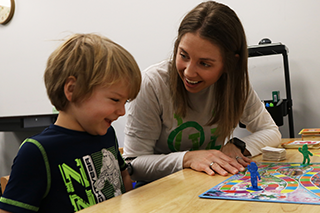How do I Talk to Someone with a Disability?
July
27 – 31 marks the fifth year of No Limits week, a collaborative disability
awareness event with CP, ASPIRO and Curative Connections. While the week will
look different this year due to COVID-19, the message is the same: to show
others that having a disability isn’t a limitation on being an active part of
the community.
An easy way to think about it is to consider the words we use to describe disabilities. As we know from recent experiences in our country, words are very powerful tools. The language we use to describe someone usually creates an attitude. When speaking about a person with a disability, there is proper and improper terminology.
Words to avoid include:Talking to someone with a disability starts by saying hello!
- deformed
- crippled
- wheelchair bound
- retard or retarded
- confined to a wheelchair
- suffering
- spastic
- afflicted
- burden
- unfortunate
- victim
- hearing impaired
- courageous
- incapacitated
The
phrase “people first language” recognizes that someone is a person first, and
the disability is a part of, but not the whole person. Refer to the individual
first, then to his or her disability when it is relevant and appropriate. Consider
these examples:
- physically disabled
- person who uses a wheelchair
- person with a disability
- person with a mental illness
- person who is blind
When it comes to speaking with someone
with a disability, there are a few things to keep in mind that can ease some of
the pressure.
First, approach the person just like
you would anyone else. Speak to an adult as an adult. Talk directly to the
person using the wheelchair, rather than someone else such as a caregiver. Just
because they are in a wheelchair doesn’t mean they can’t understand or interact
with you.
Depending on their communication ability, you may not understand the person right away. That is totally okay, just ask them to repeat what they said and be patient. Some folks communicate using a device they key their message into which can take time. Again, just be patient and let them finish their thought instead of trying to guess what they want to say.
While you are talking, don’t lean or hang on the person’s wheelchair. It invades their personal space.
In addition, you might have to adjust how you communicate in order to better connect with the person. This includes using more direct language, making solid eye contact and keeping the message simple.
Taking the time to get to know someone with a disability isn’t a one sided affair. It can open you both up to an entirely new experience that is rewarding and meaningful while creating a new and lasting friendship.
Like this post? SIGN UP for CP’s weekly blog post.
Want more information like this? SIGN UP to receive CP
emails.




Comments
Post a Comment